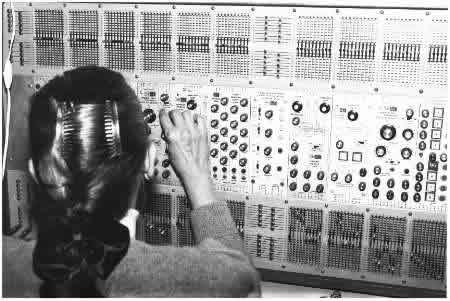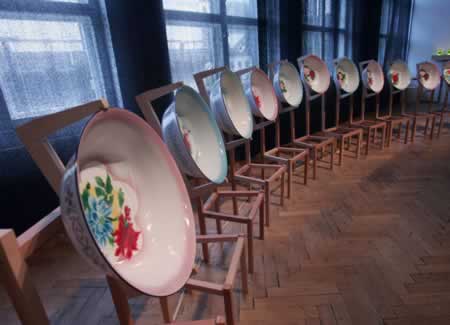
I've just got back from Ars Electronica [...] here are the winners of the Golden Nicas.
'458nm ' by Ilija Brunck, Tom Weber and Jan Bitzer from the Film Academy of Baden Württemberg were the winners of the Computer Animation / Visual Effects category.

'It's midnight. A smattering of moonlight falls upon the forest floor. Two mechanical snails move slowly through the darkness. They confront one another and briefly take the measure each other's powers before uniting in love play. With mounting ecstasy, their transparent bodies begin to glow,but just before climax a dark shadow looms over them;'
The Digital Music category was awarded to sound pioneer Eliane Radigue for a contemplative piece entitled 'L'ie circ;Ie re-sonante.'

According to Eliane Radigue, 'L'ie circ;Ie re-sonante' (The Resonating Isle) was inspired by a moment in which the musician saw an island in a lake while the water reflected her face. Such an image is twoelements in one-- a 'real' picture and an optical illusion. The depth of the water is reflected by thedeeper tones; the higher tones float above them like the island jutting out of the water.
Eliane Radigue composes electro-acoustic music. In the early '50s, she was one of the pioneers of this genre (together with Pierre Schaeffer and Pierre Henry). The same consistency and economy with which she works exclusively with an ARP synthesizer has characterized her musical mode of expression for decades. Lately, she has been discovered as a model by a younger generation of musicians.
Interactive Art winner was Paul DeMarinis for his installation 'The Messenger'
E-mails from all over the world are received by a computer and distributed to three systems of bizarre output devices that enable installation visitors to experience the messages sensorially. First, to 26 washbasins arrayed in a large oval; the number of basins is identical to the number of letters in the alphabet, and a different voice is assigned to each one. Built-in loudspeakers serially in tone the individual letters of the incoming e-mail.

Second, there's a chorus line of 26 dancing skeletons;each skeleton wears a small poncho prominently displaying one of the letters of the alphabet. The individual letters of the message activate the corresponding skeleton and the chorus line's dance reproduces the text of the e-mail.

And third, there's a series of 26 electrolytic jars with metalelectrodes in the form of the letters A to Z that oscillate and bubble when electricity is passed through them and let the letters of the e-mail glow in color.

The system stores no information and has no data processing capabilities. If the signals are not observed, written down and interpreted, then the installation is the end of the line for messages that had traveled around the world to meet their demise here. The installation thus becomes an allegory for messages whose final destination is a total void -- phenomenon that has become a standard component of everyday life in the modern world. According to DeMarinis, 'The Messenger' is based on early ideas about telegraphy and especially those of Catalan physician and naturalist Francesc Salva. He designed an 'output device' for his telegraph equipment that involved an array of 26 servants who, following 'stimulation' in the form of an electrical shock, would each call out a particular letter of the transmitted message, which could then be understood by a listener. The installation takes this as the point of departure for a consideration of the interrelationships between electricity and democracy, and how electronic communications technologies have led to loneliness and isolation just as they have contributed to the enrichment of our lives and experiences.
[More...]
Originally posted on Interactive Architecture dot Org by Rhizome



